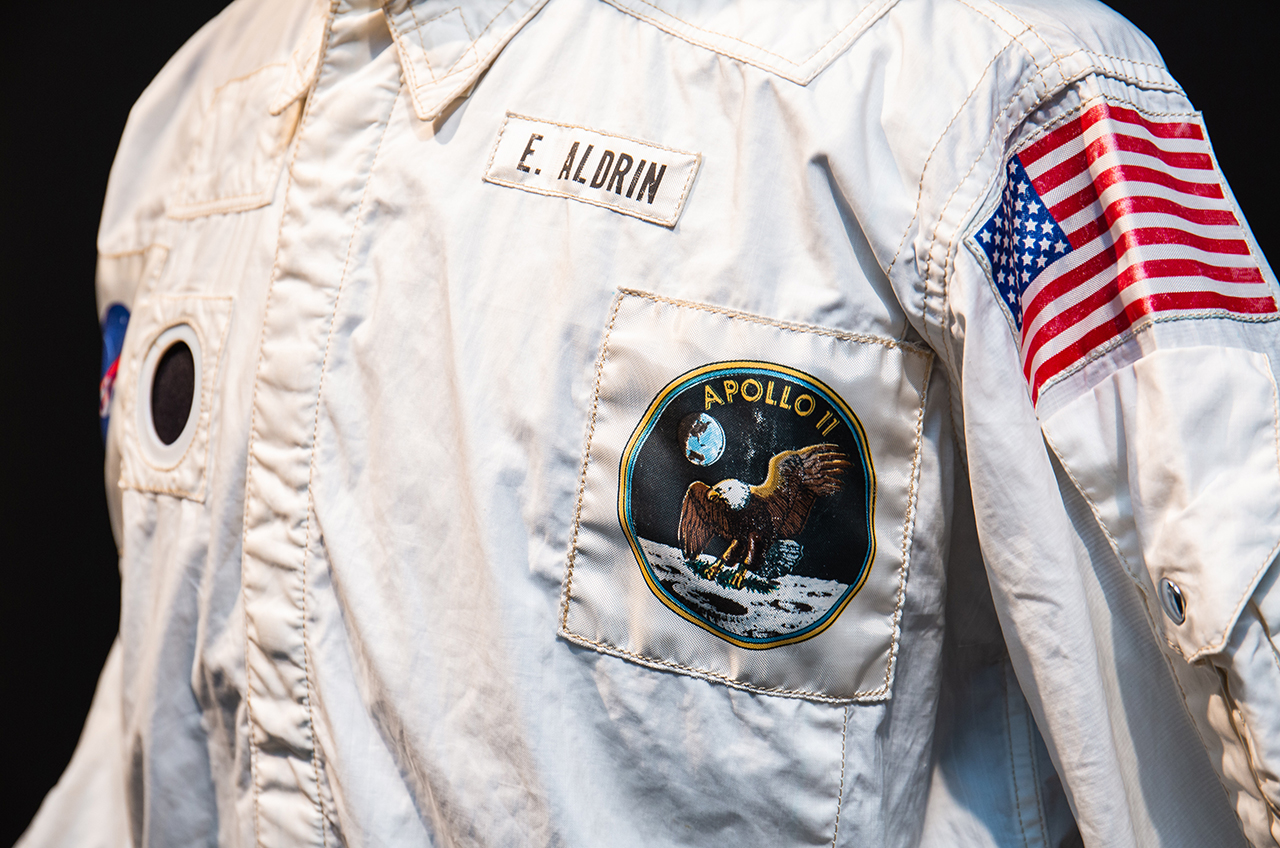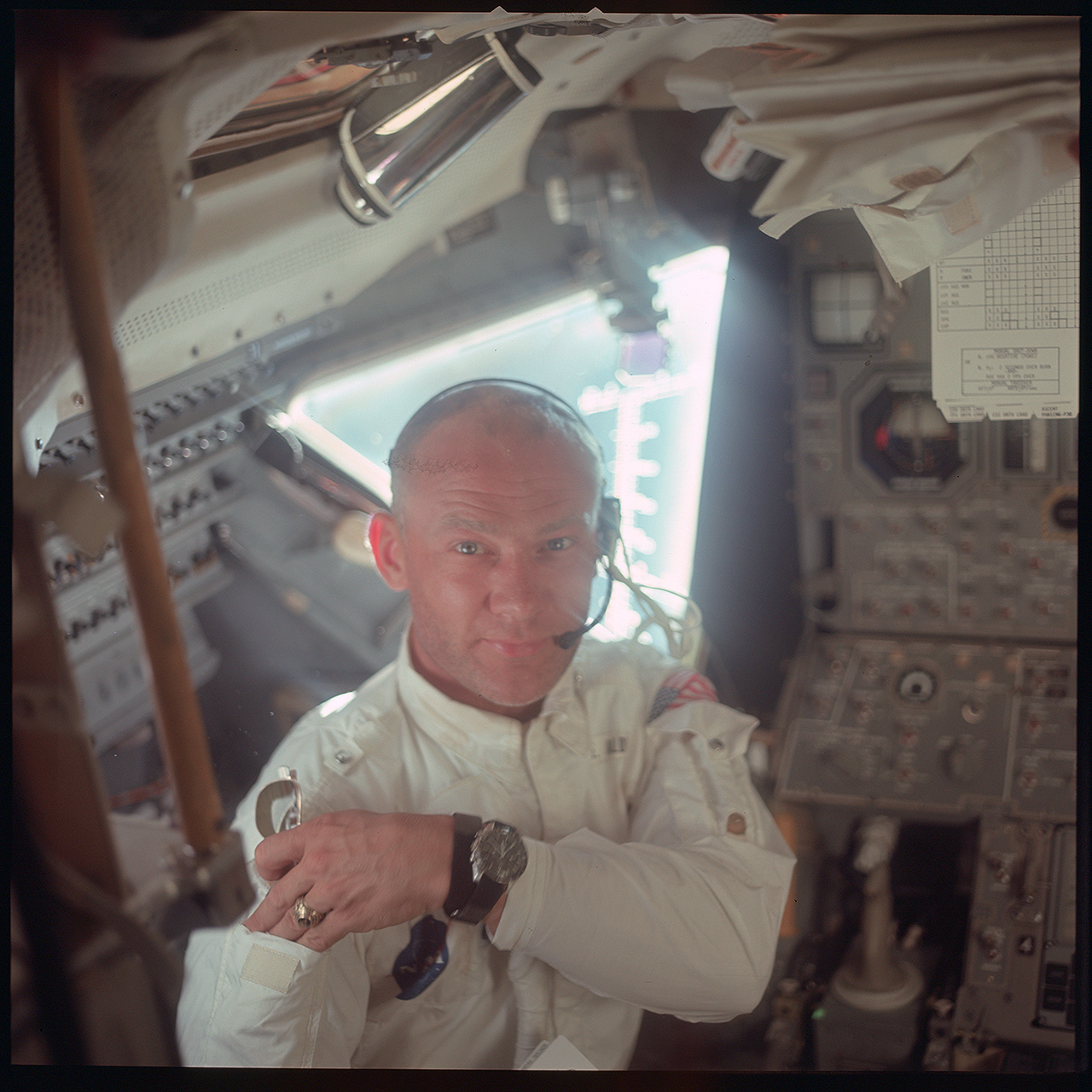Buzz Aldrin's moon-flown Apollo 11 jacket sells for record $2.8M at Sotheby's
Sotheby's 'Buzz Aldrin: American Icon' auction is the most valuable space exploration sale ever held.

A jacket worn to the moon by astronaut Buzz Aldrin set a new record for the most-ever paid at auction for a flown-in-space artifact, while Aldrin's pen credited with saving the Apollo 11 mission failed to sell.
The bidding for Aldrin's inflight coverall jacket opened at $500,000 at Sotheby's in New York on Tuesday (July 26). One of 70 lots being offered from the 92-year-old moonwalker's collection, the glass-woven (Beta cloth) jacket was donned by Aldrin when he wasn't wearing his Apollo 11 spacesuit on the way to and from the moon 53 years ago this month.
"This is Buzz Aldrin's jacket from Apollo 11. It is not going to come around again," said Quig Bruning, Sotheby's head of jewels for the Americas and the auctioneer for Tuesday's "Buzz Aldrin: American Icon" sale, as the bids for the jacket crossed the $1 million mark.
A few minutes later, Bruning dropped the hammer at $2,250,000. With Sotheby's premiums included, the jacket was sold to an unnamed buyer bidding by phone for $2,772,500.
"And that is a world record for any space-flown artifact," said Bruning.
The previous record was set in 2019 by the $2,055,000 paid for a gold medallion flown by Apollo 11 commander Neil Armstrong to the surface of the moon. The "Robbins" medallion, named for the mint that struck it, was one of only three gold medallions flown on the mission.
Related: Buzz Aldrin and the Apollo 11 mission
Breaking space news, the latest updates on rocket launches, skywatching events and more!

Aldrin's jacket was also one of three flown on Apollo 11. The jackets worn by Armstrong and command module pilot Michael Collins are in the Smithsonian, as is a training jacket sized for Aldrin. According to letter of provenance included with the lot, Aldrin's flown jacket has been part of his "private collection since we returned home from the moon on July 24, 1969."
A law passed in 2012 confirmed that Apollo-era astronauts' retain the rights to the mission-flown equipment they saved as mementos from their spaceflights.
Sotheby's estimated before the auction that Aldrin's jacket would sell for $1 million to $2 million, the same appraisal as another lot offering a pen that was described as having saved the Apollo 11 mission.
In a bit of ingenuity, Aldrin used the Duro-brand felt-tip marker to close a circuit breaker in order to arm the lunar module's ascent engine, without which Aldrin and Armstrong might have been stranded on the moon. The lot also included the nib from the same breaker that Aldrin accidentally broke off while suiting up to walk on the moon.
Again the lot opened at $500,000, but the bidding only reached $650,000 before dropping off.
"Fair warning, hammer's up, so last chance at the circuit breaker that broke and the pen that brought them home at $650,000," said Bruning.
Failing to reach its pre-set reserve, the lot went unsold. It was the only item in the sale that did not sell.
Many of the other flown artifacts offered by Sotheby's were paper documents — flight plans and checklists that were used aboard Aldrin's Gemini 12 and Apollo 11 missions. A complete flight plan flown to the moon sold for $819,000, while a lunar module systems activation checklist that landed on the moon brought in $567,000.
The Apollo program: How NASA sent astronauts to the moon

A Whirlpool-made water dispenser used by Aldrin and Armstrong to rehydrate their freeze-dried food and which could have been used to put out any fires on the lunar module sold for $327,600.
"[That] must be a world record price for a fire extinguisher," Bruning said.
A "Go Army, Beat Navy" banner, which Aldrin held up during a 1966 spacewalk and which Sotheby's identified as a pre-auction highlight, sold for $27,720.
Another item singled out before the sale, Aldrin's MTV Video Music Awards (VMA) "Moonman" statuette, exceeded its $7,000 to $10,000 estimate, selling at $88,200.
In total, Sotheby's "Buzz Aldrin: American Icon" auction commanded $8,184,578.
"We are very pleased to announce that his sale has now reset the world record for the most valuable space exploration sale ever held, which was previously set here on the 50th anniversary of Apollo 11 [in 2019]," said Bruning. "So, congratulations."
Follow collectSPACE.com on Facebook and on Twitter at @collectSPACE. Copyright 2022 collectSPACE.com. All rights reserved.

Robert Pearlman is a space historian, journalist and the founder and editor of collectSPACE.com, a daily news publication and community devoted to space history with a particular focus on how and where space exploration intersects with pop culture. Pearlman is also a contributing writer for Space.com and co-author of "Space Stations: The Art, Science, and Reality of Working in Space” published by Smithsonian Books in 2018.
In 2009, he was inducted into the U.S. Space Camp Hall of Fame in Huntsville, Alabama. In 2021, he was honored by the American Astronautical Society with the Ordway Award for Sustained Excellence in Spaceflight History. In 2023, the National Space Club Florida Committee recognized Pearlman with the Kolcum News and Communications Award for excellence in telling the space story along the Space Coast and throughout the world.

